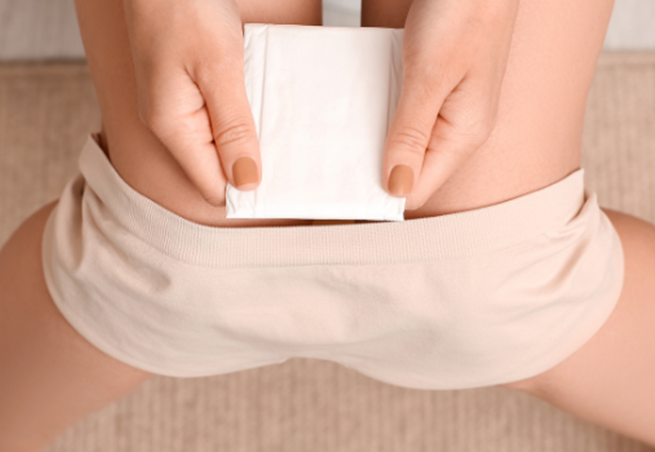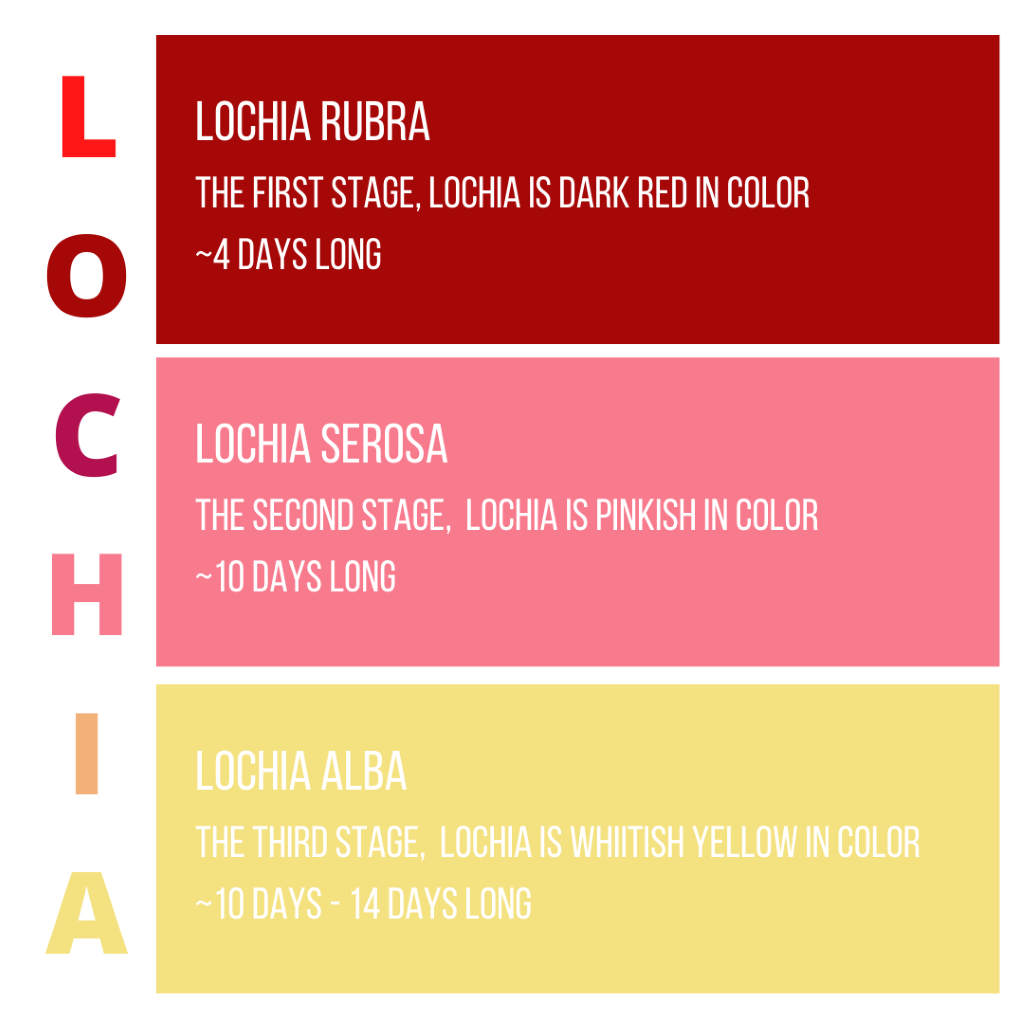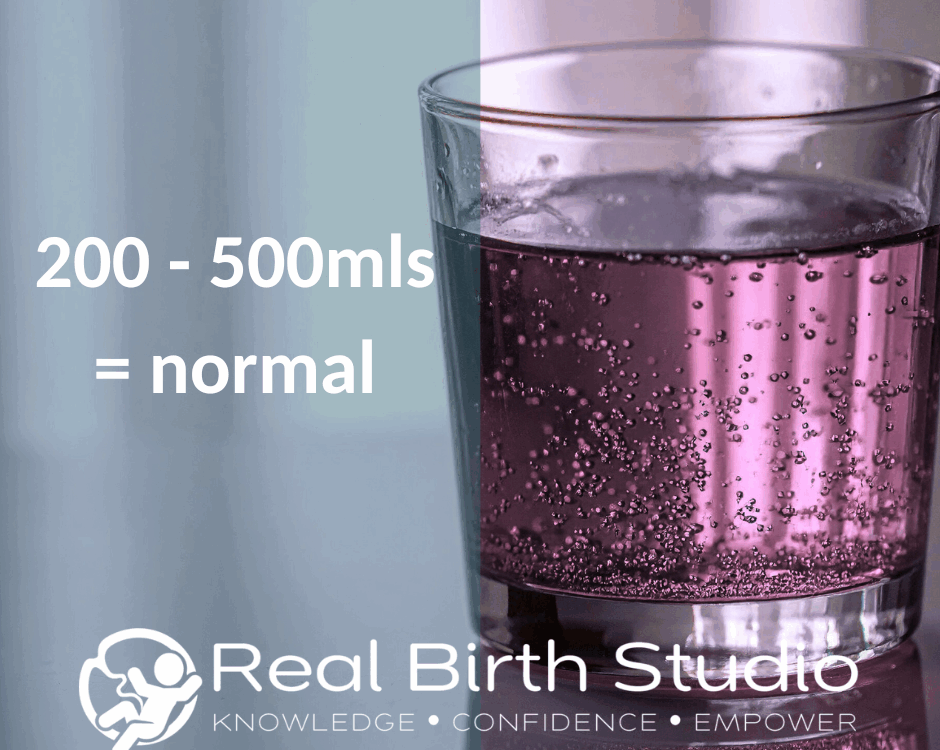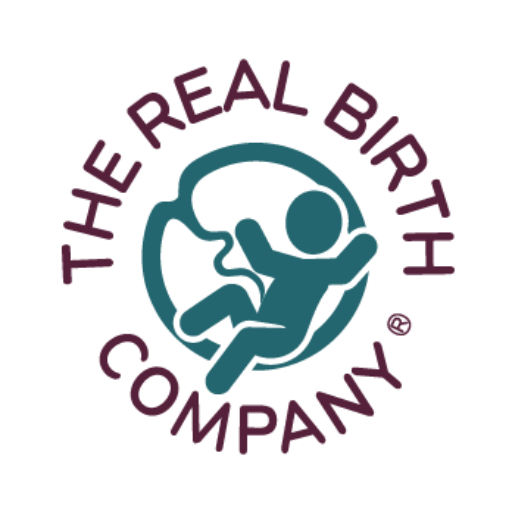
The Magic of Amniotic Fluid
22 April 2021
IVF and Stillbirth
25 April 2021
Bleeding after Birth – what you need to know!
Everyone bleeds from their vagina after they have given birth, no matter how they gave birth. But what is this blood, how long should it go on for and when should I be worried? Read on to find out everything you need to know about bleeding after birth.
Why do we bleed after we give birth?
The blood that passes from the uterus and out through the vagina after birth is called lochia. It’s not a period but it’s very much like one, in that you can’t control it and you’ll need something to capture the blood.

Like a period, lochia is the lining of the womb coming away, only this time it’s because it did house a baby rather than because it wasn’t needed to grow one. There’s just a lot more of it than you’d have each month, and it can take up to six weeks for it to all pass.
If you had a cesarean birth you may have less lochia than after a vaginal birth because some of the uterus linings will have been taken out when you had your baby. You may also find that you bleed less if you birthed your placenta physiologically rather than with active management (the injection to release the placenta).
What does normal lochia look like?
Lochia is likely to be quite heavy to start with, and bright red or red-brown, an indication of it being fresh blood that’s passing. It may include clots – but anything bigger than a lime, or if you pass more than one clot in a day, it’s best to contact your midwife for advice.
You are likely to need to change your maternity pad every couple of hours for the first day or two, reducing it to every three-four hours by day three. The bright red flow should change to a pinker, lighter colour that is more watery. Do tell your midwife if the flow doesn’t start to lessen after day four. By a couple of weeks in, lochia will start to turn to a brownish colour, and become more like the spotting at the beginning and end of a period. This is a sign of older blood now passing rather than fresh bleeding. Lochia may continue for up to 6 weeks, but can often stop sooner, however any significant change back to bright red blood should be mentioned to your midwife.

What kind of protection will I need?
If you’re buying disposable pads choose those which are specifically sold as maternity pads rather than regular period pads. They have less plastic in them, which reduces the chance of an infection. You will probably find that after a few days or a week you can move to regular period pads, especially if you have healed if you experienced a tear or graze at birth.
Your midwife can provide you with some waterproof sheets, called incopads, which you can sit on or have under you in bed if you want added protection for your home. You can also buy puppy training pads which do the same thing. However, if you are bleeding heavily enough to need these then you might be bleeding more heavily than is normal, so do seek advice from your midwife.

You can use washable cloth maternity pads if you wish, which can then be used again when your periods restart and would be perfect for heavier days. If you already have cloth pads for heavy bleeding then you might find what you have is suitable, but if you something extra for the first few days you should be able to move to them pretty quickly.
It’s best to stick to pads rather than tampons or menstrual cups until the lochia passes, to reduce the risk of infection.
It is also important to wash your hands before and after changing sanitary pads. Washing your hands can reduce the chance of infection being transferred.
Afterpains
You may experience period-like cramps which can actually be very intense to start with (some women and people describe them as similar to labour in the first 24 hours) but which should fade away over the first few days. This is because your uterus is shrinking, and going back to around its pre-pregnant size. You are less likely to notice them after a first baby and more likely to feel them after second, third or more babies. Breastfeeding may make these cramps feel stronger, and may also trigger a little extra blood flow in the first 24-48 hours or so. This is because the hormones (oxytocin) which allow your milk to flow also help to shrink your uterus, so while it can be uncomfortable, it’s also doing what your body needs to make the changes from being pregnant, it won’t last long.
Summary
It is normal to experience bleeding after birth because the uterus lining which has supported your pregnancy is now coming away. This can take up to around six weeks to pass, although most of the bleeding happens in the first week or so. If you think your bleeding is heavier than it should be, if it starts up again after it’s stopped or if you pass clots that concern you, your midwife is there to offer advice and support, so don’t hesitate to contact her!




